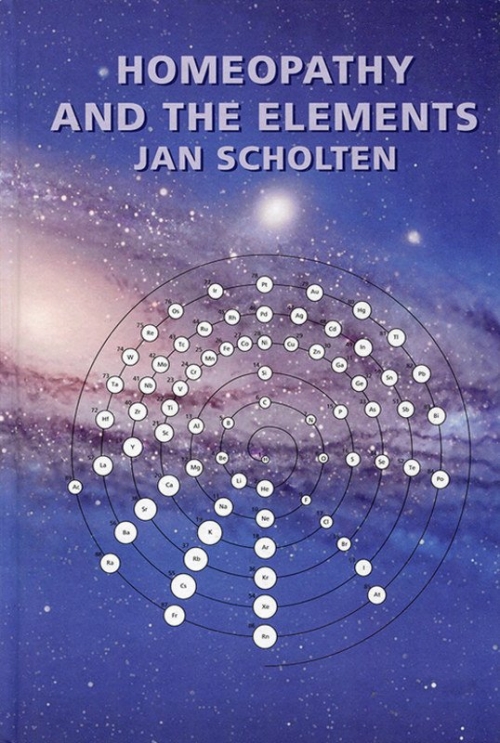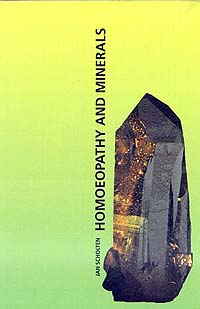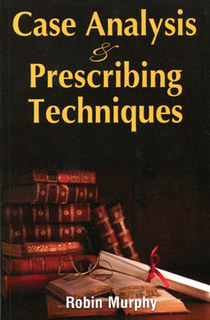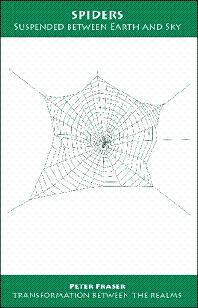Description
The GOOD news is that the new price is now $59.95 instead of $75.00!
David Johnson, CCH, has just completed a book ten years in the making! Radiance, Resonance and Healing: The Homeopathic Periodic Table was written for students, practitioners, and others interested in the use of periodic table elements for healing. He states “it is truly amazing to see how Nature has so precisely accounted and provided for all the different physical, mental, and emotional struggles we encounter, including low energy and insomnia, distractibility, memory issues, anxiety, and depression. Elements of the Table address these different problems, as well as more specific concerns related to connection, performance, suppression of one’s voice, and joy, ‘not wanting to be here,’ and feeling dragged down by heavy responsibilities.” David has practiced homeopathy for over twenty years, and for twelve years prior to that, he worked and taught as a physician assistant in a variety of settings.
Preface. . . . . . . . . . . . . . . . . . . . . . . . . . . . . . . . . . . . . . . . . . . . . . . . . . . . . . . . . . . . . . . . . . . . . . vi – viii
Acknowledgments. . . . . . . . . . . . . . . . . . . . . . . . . . . . . . . . . . . . . . . . . . . . . . . . . . . . . . . . . . ix
Introduction. . . . . . . . . . . . . . . . . . . . . . . . . . . . . . . . . . . . . . . . . . . . . . . . . . . . . . . . . . . . . . . x – xiii
Periodic Table Formats. . . . . . . . . . . . . . . . . . . . . . . . . . . . . . . . . . . . . . . . . . . . . . . . . . . . . 1 – 9
Remedy States. . . . . . . . . . . . . . . . . . . . . . . . . . . . . . . . . . . . . . . . . . . . . . . . . . . . . . . . . . . . . . . 10 -12
Overview of the Horizontal Series. . . . . . . . . . . . . . . . . . . . . . . . . . . . . . . . . . . . . . . 13 -16
The First Series. . . . . . . . . . . . . . . . . . . . . . . . . . . . . . . . . . . . . . . . . . . . . . . . . . . . . . . . . . . . . 17 – 22
The Second Series. . . . . . . . . . . . . . . . . . . . . . . . . . . . . . . . . . . . . . . . . . . . . . . . . . . . . . . . . . . 23 – 44
The Third Series. . . . . . . . . . . . . . . . . . . . . . . . . . . . . . . . . . . . . . . . . . . . . . . . . . . . . . . . . . . . . 45 – 60
The Fourth Series. . . . . . . . . . . . . . . . . . . . . . . . . . . . . . . . . . . . . . . . . . . . . . . . . . . . . . . . . . . 61 – 74
The Fifth Series. . . . . . . . . . . . . . . . . . . . . . . . . . . . . . . . . . . . . . . . . . . . . . . . . . . . . . . . . . . . . 75 – 90
The Sixth Series. . . . . . . . . . . . . . . . . . . . . . . . . . . . . . . . . . . . . . . . . . . . . . . . . . . . . . . . . . . . . 91 – 106
Overview of the Stages. . . . . . . . . . . . . . . . . . . . . . . . . . . . . . . . . . . . . . . . . . . . . . . . 107 – 114
First Stage. . . . . . . . . . . . . . . . . . . . . . . . . . . . . . . . . . . . . . . . . . . . . . . . . . . . . . . . . . . . . . . . . . 115 – 122
Second Stage. . . . . . . . . . . . . . . . . . . . . . . . . . . . . . . . . . . . . . . . . . . . . . . . . . . . . . . . . . . . . . . . 123 – 130
Third Stage. . . . . . . . . . . . . . . . . . . . . . . . . . . . . . . . . . . . . . . . . . . . . . . . . . . . . . . . . . . . . . . . . 131 – 136
Fourth Stage. . . . . . . . . . . . . . . . . . . . . . . . . . . . . . . . . . . . . . . . . . . . . . . . . . . . . . . . . . . . . . . 137 – 142
Fifth Stage. . . . . . . . . . . . . . . . . . . . . . . . . . . . . . . . . . . . . . . . . . . . . . . . . . . . . . . . . . . . . . . . . . 143 – 148
Sixth Stage. . . . . . . . . . . . . . . . . . . . . . . . . . . . . . . . . . . . . . . . . . . . . . . . . . . . . . . . . . . . . . . . . . 149 – 154
Seventh Stage. . . . . . . . . . . . . . . . . . . . . . . . . . . . . . . . . . . . . . . . . . . . . . . . . . . . . . . . . . . . . . . 155 – 160
Eighth Stage. . . . . . . . . . . . . . . . . . . . . . . . . . . . . . . . . . . . . . . . . . . . . . . . . . . . . . . . . . . . . . . . 161 – 168
Ninth Stage. . . . . . . . . . . . . . . . . . . . . . . . . . . . . . . . . . . . . . . . . . . . . . . . . . . . . . . . . . . . . . . . . 169 – 174
Tenth Stage. . . . . . . . . . . . . . . . . . . . . . . . . . . . . . . . . . . . . . . . . . . . . . . . . . . . . . . . . . . . . . . . . 175 – 180
Eleventh Stage. . . . . . . . . . . . . . . . . . . . . . . . . . . . . . . . . . . . . . . . . . . . . . . . . . . . . . . . . . . . . 181 – 186
Twelfth Stage. . . . . . . . . . . . . . . . . . . . . . . . . . . . . . . . . . . . . . . . . . . . . . . . . . . . . . . . . . . . . . 187 – 192
Thirteenth Stage. . . . . . . . . . . . . . . . . . . . . . . . . . . . . . . . . . . . . . . . . . . . . . . . . . . . . . . . . . . 193 – 198
Fourteenth Stage. . . . . . . . . . . . . . . . . . . . . . . . . . . . . . . . . . . . . . . . . . . . . . . . . . . . . . . . . . 199 – 204
Fifteenth Stage. . . . . . . . . . . . . . . . . . . . . . . . . . . . . . . . . . . . . . . . . . . . . . . . . . . . . . . . . . . . . 205 – 210
Sixteenth Stage. . . . . . . . . . . . . . . . . . . . . . . . . . . . . . . . . . . . . . . . . . . . . . . . . . . . . . . . . . . . . 211 – 216
Seventeenth Stage. . . . . . . . . . . . . . . . . . . . . . . . . . . . . . . . . . . . . . . . . . . . . . . . . . . . . . . . . . 217 – 222
Lanthanides. . . . . . . . . . . . . . . . . . . . . . . . . . . . . . . . . . . . . . . . . . . . . . . . . . . . . . . . . . . . . . . . . 223 – 242
Actinides. . . . . . . . . . . . . . . . . . . . . . . . . . . . . . . . . . . . . . . . . . . . . . . . . . . . . . . . . . . . . . . . . . . . 243 – 262
Eighteenth Stage. . . . . . . . . . . . . . . . . . . . . . . . . . . . . . . . . . . . . . . . . . . . . . . . . . . . . . . . . . . 263 – 272
Review: Listening for Limitation. . . . . . . . . . . . . . . . . . . . . . . . . . . . . . . . . . . . . . . . . . 273 – 276
Review: Listening for Series. . . . . . . . . . . . . . . . . . . . . . . . . . . . . . . . . . . . . . . . . . . . . . . 277 – 280
Review: Listening for Stages. . . . . . . . . . . . . . . . . . . . . . . . . . . . . . . . . . . . . . . . . . . . . . . 281 – 284
Review: Listening for Anions. . . . . . . . . . . . . . . . . . . . . . . . . . . . . . . . . . . . . . . . . . . . . . 285 – 288
Other Carbon Compounds as Anions. . . . . . . . . . . . . . . . . . . . . . . . . . . . . . . . . . . . . . 289 – 294
Review: Combining Cations and Anions. . . . . . . . . . . . . . . . . . . . . . . . . . . . . . . . . . . 295 – 304
Epilogue. . . . . . . . . . . . . . . . . . . . . . . . . . . . . . . . . . . . . . . . . . . . . . . . . . . . . . . . . . . . . . . . . . . . . 305
Post-script. . . . . . . . . . . . . . . . . . . . . . . . . . . . . . . . . . . . . . . . . . . . . . . . . . . . . . . . . . . . . . . . . . 307
Appendix. . . . . . . . . . . . . . . . . . . . . . . . . . . . . . . . . . . . . . . . . . . . . . . . . . . . . . . . . . . . . . . . . . . . 309 – 312
Bibliography. . . . . . . . . . . . . . . . . . . . . . . . . . . . . . . . . . . . . . . . . . . . . . . . . . . . . . . . . . . . . . . . .313 – 314
FLUORINE (Fl)
Fashion is the science of appearance, and it inspires one with the desire to seem rather than to be. Henry Fielding
Love, as it exists in society, is merely the mingling of two whims and the contact of two skins. from the movie “The Rules of the Game”
“Here too it’s masquerade, I find:
As everywhere, the dance of mind.
I grasped a lovely masked procession,
And caught things from a horror show…
Goethe
Fluorine marks our first exploration into self-identity and connection with others. Situated in the 2nd Series (identity and feeling safe in our environment) and in the 17th Stage (uncertain and changing connections) in the Fluorine state (Fluoric acid; Fluoratums) we mistake appearance as a means to connect. And in light of our imperfect human state, we may feel that to remain connected, there’s something we need to hide.
The Fluorine state can be compared to an early developmental stage, where as infants we are passed around between family and friends. They smile at our appearance, even as we are experiencing ever-changing connections. Challenges develop as that experience continues: it becomes difficult to move beyond surface appearances to connect with others, and superficial interactions lead to feelings of loneliness and isolation.
An emphasis on hiding may have been modeled within our families: ‘it is better to look good than be truthful’ and ‘don’t tell others what happens in our house.’ And perhaps our personal or family circumstances were mortifying—physical abuse, sexual abuse, alcohol, drugs, etc.—so we learned to hide on our own. We created appearances to avoid rejection, but they also created a sense of separation.
In a Fluorine state we can also suffer from a lack of emotional depth and feeling between ourselves and others, and superficial appearances interfere with a deeper sincerity, genuineness, and even integrity. And we can experience problems distinguishing between shallow and deeper connections, or even knowing how to form deeper bonds.
In a subconscious attempt to resolve these problems, we may try to control the distance between ourselves and others: looking good but holding others at arm’s length, or making and breaking relationships on a whim. Fluoratum energy is evident in Hollywood (‘Tinseltown”), Las Vegas (“What happens in Vegas stays in Vegas”), and with Liberace, a former Vegas performer who navigated a glittery stage performance with a notorious private life.
So at an extreme, we hide ourselves and our circumstances behind an attractive display—the unpleasant becomes hidden behind deceptive appearances: ‘Mom would say all these negative things to me in private, then want to show me off;’ ‘I wanted a deeper connection with both my parents, but they acted as if everything was normal.’
In a Fluoratum state we can also be attracted by spiritual idealism—“light” at the expense of an unreconciled shadow. That is, we are enticed by ideas about spirituality—our own or that of others—and yet shadows hide in the reflected Light.
The common “loud” descriptions of Fluorine states are easier to recognize, but as with songs on a radio, Fluorinelyrics are still present at lower volume. And when persona becomes ever more sophisticated in “hiding the hiding”—a Fluorine presentation is quieter. Even so, during the history we will eventually express more socially acceptable themes—embarrassment, abandonment or loneliness, for example—clues leading to the distressed state of shame, exposure and betrayal. If a practitioner is thinking of a hidden Fluoride state, they might ask about our childhood and if there was any emphasis on appearance, “hiding the dirty laundry,” etc.
And because Fluoratums reflect a struggle with hidden and unresolved subconscious conflicts, and the desire to “gloss them over,” we can project that same shadow into the world, suspecting others of having ulterior motives. For example, we see them as “slippery,” “smooth talkers,” “having an agenda,” etc., even though we’re looking through veils of deception within ourselves. We may also find ourselves sensitized to and irritated by “personas,” and place importance on “being authentic and real.”
In the commercial world fluoride has been used to make the easy-to-clean surfaces of Teflon pans, and in the 70’s an impeccably dressed but amoral mobster was known as the “Teflon Don.” So just as fluoride keeps the teeth smooth and shiny, the appearance can hide decay.
And in a homeopathic Fluorine state we may have a history of significant dental problems—dentition, crooked teeth, caries, etc.—or skeletal abnormalities and deformities. There can also be some laxity of the ligaments and tendons, in other words, “loose connections.”
Considering all the above, it is easy to see how Fluorine is considered a syco-syphilitic remedy—a combination of hiding, abnormal growth and overgrowth, and destruction.
Fluoratum’s relationship with other “shameful” remedies: Thuja and Hyoscyamus
While many remedies can experience embarrassment, Fluorine, Thuja and Hyoscyamus have stronger feelings of shame. Fluorine shares similarities with Thuja, but in Fluoride we create an exterior that makes us appear more attractive, and with Thuja we want our exterior to blend in, not stand out. And in a Thuja state we wear a pleasant but unremarkable mask, with feelings of shame about who we are inside. In order to be accepted our persona changes according to the people around us. “Too much form and not enough structure” is one phrase used to describe the Thuja state, which is similar to how the outer foliage of Arbor Vitae hides its very plain interior.
In contrast, Fluorine, derived from the mineral kingdom, can also express a more structured history. Fluorine’s surface appearance and interaction has as much to do with hiding circumstances as it does with hiding ourselves: ‘connect with the nice presentation, but don’t look beyond and see my damaged state of affairs.’ As above, an unresolved psychological shadow related to ourselves and our circumstances is compensated by our concern over appearance and presentation.
In a Hyoscyamus state we can also experience subconscious fears or anxieties related to intimacy. Ironically, in Hyoscyamus we can also hide through appearances, but the purpose is different than in Fluoratums: our fears of abandonment result in deliberately shocking others. In a Hyoscyamus state we provoke attention so we’re not ignored: “any attention is better than no attention.” Our shame is hidden by shamelessness, and provocative dress and behavior distracts attention away from our deeper sense of vulnerability. Our fear of betrayal in Hyoscyamus is also demonstrated through more intense jealousy than in Thuja or Fluoratums.
So in a Fluoratum state we hide ourselves and our circumstances behind a nice display, in a Thuja state we hide a sense of inner “badness” by blending in, and in a Hyoscyamus state we hide a fear of abandonment by acting out.
Fluoratum’s relationship with other “embarrassment” elements
In a Fluorine state we also share some similarities with Silica, but in a Silica state we’re more concerned about reflecting a specific or fixed image—‘how am I being seen?’ ‘I want to be seen in particular ways—‘I’m competent, I’m professional, I’m witty, I’m generous, I’m intelligent, I have good taste.’ ‘I don’t want people to think that I’m . . . ‘ or ‘People could think that I’m…’ In effect we’re saying ‘I want others to see me as I see myself’—and when they do it supports what we think of ourselves to be true.
One metaphor for distinguishing Silica from Fluorine is the difference between one-way and two-way mirrors. A one-way mirror reflects a particular image to others (Silica,) and with a two-way mirror something hides behind the reflective surface (Fluorine.) In a Silica state we also tend to run cold, and in a Fluorine state we tend to run warm. Compared to a Fluorine state, in Silica we also carry less conflict relative to connection.
Our Fluorine state can also look like shiny Chromium in the 4th horizontal line (the Copper Series) and 6th vertical Stage, but in the Chromium state we will have fears of having to perform a task before being completely prepared, and we may feel like a fraud in terms of competency. The Fluorine state may also need to be distinguished from elements in the 5th horizontal line (the Silver Series): with Fluorine we will have conflicts related to hiding, exposure and connection, and with Silver Series remedies (discussed in a later chapter) we will have conflicts related to polished creative performance in the public eye.
Finally, in a Fluorine state we share some themes with remedies of the 1st and 2nd Stages of the table. With 1st Stageelements we often hide our sensitivity and feelings in an attempt to protect against emotional vulnerability, and compared to Fluorine’s tendency toward superficial connection, the 1st Stage elements are related to deeper 1:1 relationships. And with 2nd Stage elements we hide our vulnerabilities within the outer structures that support us (e.g., maintaining harmony in our circle of friends—Magnesium; not making mistakes so we are not fired from our job—Calcarea.)








Reviews
There are no reviews yet.